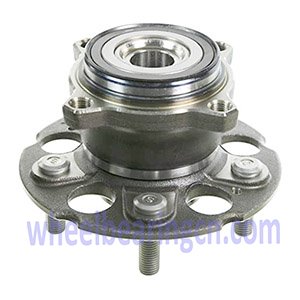When it comes to machinery, automotive systems, and industrial equipment, wheel and bearing assemblies play a crucial role in ensuring smooth operation, reducing friction, and enhancing durability. Whether you’re a mechanic, engineer, or DIY enthusiast, understanding how these components work can help you optimize performance and extend the lifespan of your equipment.
In this article, we’ll explore:
✔ What are wheels and bearings?
✔ Types of bearings used in wheels
✔ Signs of wheel bearing failure
✔ How to maintain wheel bearings
✔ Choosing the right wheel and bearing for your application

What Is Wheel and Bearing?
A wheel is a circular component that rotates on an axle, enabling movement in vehicles and machinery. For smooth rotation, wheels rely on bearings—precision-engineered components that reduce friction between moving parts.
Bearings support radial and axial loads, allowing wheels to spin freely while maintaining structural integrity. Without high-quality bearings, wheels would wear out quickly due to excessive friction and heat buildup.
Types of Bearings Used in Wheels
Different applications require specific types of bearings. The most common wheel bearings include:
- Ball Bearings
- Use small steel balls to reduce friction.
- Ideal for light to moderate loads (e.g., bicycles, skateboards).
- Low maintenance but less durable under heavy stress.
- Roller Bearings
- Use cylindrical rollers for better load distribution.
- Suitable for heavy-duty applications (e.g., trucks, industrial machinery).
- Handle higher radial loads than ball bearings.
- Tapered Roller Bearings
- Designed to manage both radial and axial loads.
- Commonly used in automotive wheel hubs.
- Provide excellent durability for high-speed rotation.
- Hub Bearings (Unit Bearings)
- Pre-assembled, sealed bearings for easy installation.
- Found in modern cars and SUVs.
- Reduce maintenance with built-in lubrication.
Signs of Wheel and Bearing Failure
Failing wheel bearings can lead to serious safety hazards. Watch for these symptoms:
🔧 Grinding or humming noise – A loud, continuous sound that increases with speed.
🔧 Uneven tire wear – Misalignment caused by a bad bearing.
🔧 Steering wheel vibration – Worn bearings create instability.
🔧 ABS malfunction – Faulty bearings can interfere with wheel speed sensors.
If you notice these signs, replace the bearings immediately to avoid wheel seizure or accidents.
How to Maintain Wheel Bearings
Proper maintenance extends bearing life and prevents costly repairs:
✅ Regular Inspection – Check for play in the wheel by lifting the vehicle and shaking the tire.
✅ Lubrication – Repack grease in non-sealed bearings periodically.
✅ Seal Integrity – Ensure bearing seals are intact to keep contaminants out.
✅ Timely Replacement – Replace bearings at the first sign of wear.
Choosing the Right Wheel and Bearing
Selecting the correct bearing depends on:
- Load capacity (light, medium, or heavy-duty)
- Speed requirements (high-speed vs. low-speed applications)
- Environmental conditions (water, dust, or extreme temperatures)
- Vehicle/machine specifications (check OEM recommendations)
For automotive use, hub assemblies with integrated bearings are popular for their convenience. Industrial machinery may require tapered roller bearings for heavy loads.
Final Thoughts
Wheel and bearing systems are vital for efficient motion in vehicles and machinery. By understanding their types, recognizing failure signs, and following maintenance best practices, you can ensure optimal performance and safety.
